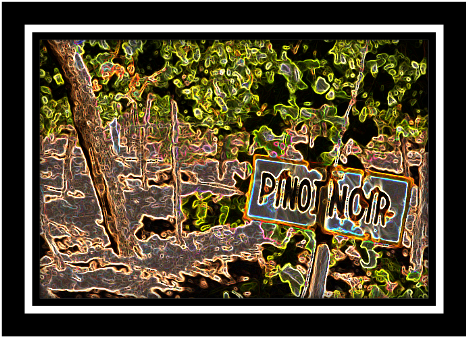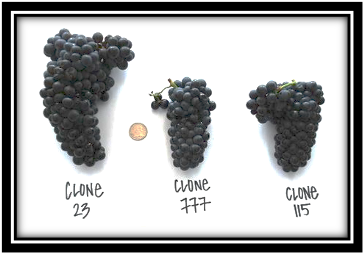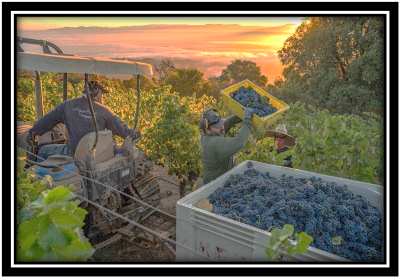REGULAR HOURS: TUESDAY-THURSDAY 12-6PM // FRIDAY & SATURDAY 12-8PM // SUNDAY 12-5PM // CLOSED MONDAYS
EXTENDED HOLIDAY HOURS: OPEN MONDAYS // THURSDAY - SUNDAY OPEN UNTIL 8p // CHRISTMAS EVE 9-2p // CLOSED CHRISTMAS

Click here to see the original pdf-formatted version
Book of Bertil 42
23andMe
Pinot Noir DNA
This week marked International Pinot Noir Day. I would like to take this opportunity to invite you to explore the many facets of this legendary grape, capable of producing still red, rosé, or white wines, but also sparkling wines both white and rosé as well as fortified and dessert wines. After the description of the various clones, you will find four wines of great exception by their singularity and rarity.
INTRODUCTION
Pinot Noir: Its history
An ancient grape variety, Pinot Noir has shaped the history of wine through both its origin and its remarkable diversity. Born under the Gallic Empire over 2,500 years ago in Burgundy where it still reigns supreme today it is one of the oldest cultivated grape varieties in the world. Its genetics have profoundly influenced viticulture, giving rise to countless descendants. Through natural mutations, it produced Pinot Gris, Pinot Blanc, and Pinot Meunier. Through crossings, it became the parent of iconic grape varieties such as Chardonnay, Gamay, Aligoté, Melon de Bourgogne, Pinotage, and Savagnin Rose. It even contributed indirectly to the large “Serine” family, which includes Syrah, Roussanne, Mondeuse, and Marsanne. Today, more than 1,000 Pinot Noir clones are cultivated worldwide, with the most common grouped into major families:

CHAPTER 1.0
Verse 42.1.01: The History of Pinot Noir in the United States
In California, Robert Mondavi explored the cool-climate terroirs of Sonoma and Santa Barbara. In Oregon, David Lett and Dick Erath planted the first vines in the Willamette Valley capable of expressing the elegance and finesse of this legendary grape. Temperate climate, volcanic soils, and cool summers provided the perfect setting for wines with aromatic complexity worthy of Burgundy. The following decades saw the rise of American Pinot Noir. Sonoma Coast, Russian River Valley, Sta. Rita Hills: each region refined its style, developed its clones, and perfected winemaking techniques. Producers focused on tension, freshness, and subtlety, striving to capture the soul of each terroir. Oregon became a true sanctuary for Pinot Noir, while California excelled in elegance and fruity power. Today, this grape symbolizes the excellence and boldness of American viticulture. Inspired by Burgundy but free to innovate, winemakers continually push boundaries. From meticulous grape sorting to careful vinification, Pinot Noir expresses a unique identity: delicate, complex, and deeply rooted in the New World.
42.1.02: American Clones
In the United States, Pinot Noir developed mainly from clones imported from Burgundy, along with local selections adapted to Californian soils and climates. Among the most iconic are Martini, Calera, Swan, and Mt. Eden.

42.1.03: The Martini Clone, or “Super Clone 104”
Also known as FPS 13 and FPS 15, it is one of the oldest and most iconic Pinot Noir clones in California. Its history dates to the 1940s, when Louis M. Martini, a visionary of Napa Valley, acquired the Stanly Ranch in Carneros. Spared from phylloxera in the 1880s, this estate became a key site for clonal experiments conducted with Dr. Harold Olmo of the University of California at Davis. There, Pinot Noir cuttings likely from the neighboring Inglenook vineyard were selected for their remarkable qualities. After heat treatment to eliminate viruses, FPS 13 and FPS 15 were registered in 1974 and marketed under the name “Super Clone 104.” The Martini clone is distinguished by elegant wines with floral and fruity aromas, lively acidity, and a fine structure, all qualities sought after for refined expressions of Pinot Noir. Today, it remains widely planted in the Carneros region, a testament to the innovation and passion of California winemakers.
42.1.04: The Calera Clone, a “Suitcase Clone”
Its history is closely linked to the Calera Wine Company, founded in 1975 by Josh Jensen in the San Benito Mountains of Central California. Passionate about Pinot Noir, Jensen sought to recreate Burgundy conditions in California: limestone soils and cool climates. After training at prestigious estates, including Domaine de la Romanée-Conti, he secretly brought back Pinot Noir cuttings from Burgundy, hence the nickname “suitcase clone.” Planted in Calera’s limestone soils, they produced a unique clone, characterized by small berries, intense color, fine tannic structure, and minerality typical of limestone terroirs. Although its exact origin remains mysterious, the Calera clone is now renowned for producing high-quality wines: floral, fruity, lively, and complex. Several Californian producers now cultivate it, offering elegant and refined expressions that honor Josh Jensen’s pioneering spirit.
42.1.05: The Swan Clone, also called “Clone A”
Among the oldest Californian clones, the Swan clone is named after Joseph Swan, a pioneer of viticulture in the Russian River Valley. In 1967, he acquired a Zinfandel plot in Trenton and planted Pinot Noir, Chardonnay, and Cabernet Sauvignon. The first cuttings likely came from Mount Eden Vineyards, or possibly directly from Burgundy, explaining the genetic diversity of the clone. Used in several clonal trials, including the Carneros Creek Clonal Trial, they were designated “Clone A” and later registered as FPS 97 by the University of California at Davis. Another variant from Dehlinger Winery was registered as FPS 141.1. Today, the Swan clone is cultivated in the Russian River Valley, Santa Barbara, and Santa Maria Valley. It is prized for its floral aromas, silky texture, and ability to produce elegant, refined wines. A living legacy of Joseph Swan, it remains synonymous with high-quality Pinot Noir.

42.1.06: The Mt. Eden Clone: The Ancestor of American Pinot Noir
Undoubtedly one of California’s most prestigious clones. It originates from vines planted in 1945 by Martin Ray in the Santa Cruz Mountains, on the site of today’s Mount Eden Vineyards. The cuttings likely came from La Cresta Vineyard, founded by Paul Masson, a Burgundian who imported Pinot Noir and Chardonnay vines in the late 19th century. Known for small clusters and compact berries, the Mt. Eden clone promotes high aromatic concentration. Wines from this clone offer intense red fruit aromas, lively acidity, and an elegant tannic structure, ideal for long aging. In 1992, it was officially registered as PN 37 by the University of California at Davis. Today, it is cultivated in the Santa Cruz Mountains, Santa Maria Valley, and Russian River Valley.
Thus, the diversity of American clones illustrates both the French heritage and the creative adaptation to local terroirs, giving rise to wines of remarkable aromatic richness and stylistic depth.
CHAPTER 2.0
Verse 42.2.01: White Pinot Noir Wines
Since the 17th century, Champagne has established itself as the birthplace of white wines made from black grapes. There, Pinot Noir is gently pressed to obtain a clear juice, giving rise to the famous “blancs de noirs,” which combine power and finesse. The pale-yellow color with green or golden highlights reveals aromas of pear, apple, citrus, and flowers, sometimes enhanced by subtle mineral notes. On the palate, bright acidity and the absence of pronounced tannins provide an elegant texture, while the effervescence magnifies finesse and freshness. Outside of Champagne, bold winemakers in the United States, particularly in Oregon, are exploring this style. Often produced in very small quantities, these wines reflect a fascinating diversity of techniques, clones, and styles, and are sold almost exclusively for tastings or through private clubs, sometimes creating a true cult around certain cuvées, such as Domaine Serene’s “Cœur Blanc”.
Domaine Serene, Cœur Blanc 2020, Dundee Hills, Willamette Valley, OR
Made from 100% Pinot Noir vinified as a white wine, this rare wine embodies the excellence of its terroir. From the moment the grapes arrive at the winery, they are pressed with extreme care to obtain a clear juice that preserves the grape’s full purity. Its pale-yellow robe with antique gold highlights is clear and bright. The bouquet reveals a refined complexity of poached pear, green apple, white flowers, and subtle mineral notes. The palate is lively and fresh, supported by perfectly integrated acidity. The long, persistent finish unfolds flavors of nectarine and white peach, enhanced by delicate minerality and a hint of salinity. Balanced, elegant, and true to the unique expression of Dundee Hills soils, this wine offers a memorable sensory experience. It pairs perfectly with seafood, grilled fish, aged cheeses, but is especially sublime with veal fillet and apricots.

42.2.02: Rosé Pinot Noir Wines
Vinified as a rosé, Pinot Noir expresses a delicate and varied aromatic palette. Pale rosés offer freshness, with notes of strawberry, raspberry, and citrus, and a lively acidity ideal for summer. Darker rosés, produced with longer macerations, develop aromas of cherry, melon, or ripe red fruits, with a rounder texture. Some adopt a Burgundian style, elegant and subtle, while others, particularly in California, favor fruity generosity and a light body. Whether dry, aromatic, or slightly creamy, Pinot Noir rosés always retain refinement and harmony. Most are intended for casual consumption at an accessible price, and great gastronomic rosés remain rare—but here is one that defies that rule, promising unforgettable sensations.
Audeant Wines, Rosé of Pinot Noir 2022, Willamette Valley, OR
If there is truth in illusion, this wine is its embodiment. Audeant Wines was born from the partnership of Teal Walker and Andrew Riechers, a talented winemaker trained in Burgundy, New Zealand, and at Antica Terra. This exceptional rosé comes from a skin-fermentation, a technical feat reminiscent of a magic trick. Both a rosé by vinification (skins separated from juice before fermentation ends) and red by its intensity, it displays the delicate hue of Queen Elizabeth roses and the bright peach of David Austin roses. Its visual brilliance announces freshness and joy. The nose, however, confounds with aromas of peach, orange peel, a bouquet of faded roses, red cherry with pepper notes, and “pinot” animal hints mixed with damp hay, typical of great Pinot Noir reds. On the palate, the surprise is total: lively and profound, supported by fine tannins, vibrant acidity, and almost unreal suppleness. Serve at 55–60°F in large Burgundy glasses to reveal the full nobility of a great Pinot Noir… as it was vinified a century ago. If I could, I would canonize Andrew Riechers as Saint Pinot.
Limited edition: fewer than 200 cases produced. Price: $65.
42.2.03: Red Pinot Noir Wines
Popelouchum Vineyard, Pinot Noir 2023, San Benito, Central Valley, CA
At Popelouchum Vineyard, the experimental vineyard of San Benito, the great Randall Grahm pursues a singular quest: to reveal the terroir before the grape. Described by critics as one of California’s boldest wine ventures, this project combines the most rigorous biodynamic practices, the use of biochar, the cultivation of rare grape varieties, and even the creation of new ones, with the explicit aim of moving toward a more European wine aesthetic. Grahm’s approach does not aim to glorify Pinot Noir as a variety but to work with a mosaic of biotypes to let the soil speak: a true terroir-driven wine rather than a varietal wine. This iconoclastic approach is part of a larger project, but the path is not without challenges. His small Pinot Noir plot, consisting of twelve ungrafted clones, planted at very high density, facing north, on high-altitude soils with a cold but protected climate, has proven particularly capricious. Randall even admits that this attempt was “the greatest disappointment” of his vineyard to date. True to its demanding reputation, the grape resisted his ambitions. Yet experimentation continues with obstinacy, and in 2023, the weather finally allowed very late ripening of the grapes. The result is a singular vintage, where whole-cluster fermentation produced an intensity of flavors that transcends the simple “pinot” character of the wine.
The robe, fuchsia pink with earthy brick nuances, announces an exuberant, enveloping nose with notes of whole black pepper, cherries macerated in Burgundy Marc (white brandy), blue lilies, a metallic hint of polished steel, burnt wood, and dried tobacco leaf. The palate, both powerful and delicate, supported by firm but refined tannins, faithfully expresses all the initial aromas, finishing on wild black cherry. This is an exceptional wine, perfectly complemented by a roasted free-range chicken with autumn root vegetables or quail with black cherries.

42.2.04: Sparkling wines of Pinot Noir
Haliotide Wine, Rose of Pinot Noir Extra Brut, Topotero Vineyard, Passo Robles, CA
Haliotide Wines is a sparkling wine producer founded in 2016 by Nicole and Lucas Pope. Their mission is to craft single-vineyard sparkling wines using the traditional method, focusing on cool-climate vineyards. Nicole Bertotti Pope, the winemaker, brings over twenty years of experience. She began her career at Domaine Carneros before becoming winemaker at Stolo Vineyards, and in 2019, the San Francisco Chronicle named her a “Winemaker to Watch.”
The Pinot Noir Extra Brut Rosé 2021, from the Topotero Vineyard on the San Luis Obispo Coast, has captivated critics and wine enthusiasts alike for its exceptional quality and unique expression of California’s coastal terroir. The wine was fermented and aged in neutral French oak barrels, followed by 30 months on the lees, and finished with a low dosage of 5 g/L, highlighting its purity and mineral character. Its copper-salmon color unveils a bright and elegant nose, with aromas of wild strawberries, watermelon, pink grapefruit, and jasmine, complemented by subtle marine notes reflecting the vineyard’s proximity to the Pacific Ocean. On the palate, delicate flavors of tangerine zest, white nectarine, sea salt, and vanilla cream unfold over a fine, persistent mousse.
Produced in very limited quantities – fewer than 750 bottles (three barrels) – this rare wine enchants with its elegance and complexity, offering a compelling alternative to traditional French Champagne. It pairs beautifully with lightly briny or acidic dishes such as sushi, shrimp, or crab, with fine charcuterie like prosciutto or dry-cured ham, and with fresh, delicate cheeses such as goat cheese, ricotta, or mozzarella di bufala. For a daring pairing, it can even accompany lightly sweetened red fruit desserts.
Limited edition: less than 750 bottles produced. Price: $120.
Additamentum: Table of the main Pinot Noir clones in the United States
|
Clone |
Origin |
Acidity |
Yield |
Dominant aromas |
Maturity |
|
Dijon 115 |
Burgundy |
Average |
Medium |
Red fruits, finesse |
Average |
|
Dijon 667 |
Burgundy |
Average |
Weak |
Black fruits, spices |
Late |
|
Dijon 777 |
Burgundy |
Average |
Medium |
Intense black fruits, potency |
Late |
|
Pommard |
Burgundy |
Average |
Weak |
Red fruits, tannic structure |
Average |
|
Martini |
California |
Weak |
Medium |
Delicate red fruits |
Precocious |
|
Calera |
California |
Average |
Medium |
Red & black fruits, earthy notes |
Average |
|
Swan |
Oregon |
Average |
Weak |
Red fruits, florals |
Average |
|
Mt. Eden |
California |
Average |
Weak |
Complex, mineral, red fruits |
Late |
Conclusion:
This is a brief overview of the complexity and diversity of this grape variety according to its genetic origin and its adopted land. So, the next time you want to get a bottle of Pinot Noir, be curious and express your desire for body and aromatics and origine.
Mr. B
*Memorandum:
REGULAR HOURS: TUESDAY-THURSDAY 12-6PM // FRIDAY & SATURDAY 12-8PM // SUNDAY 12-5PM // CLOSED MONDAYS
EXTENDED HOLIDAY HOURS: OPEN MONDAYS // THURSDAY - SUNDAY OPEN UNTIL 8p // CHRISTMAS EVE 9-2p // CLOSED CHRISTMAS
